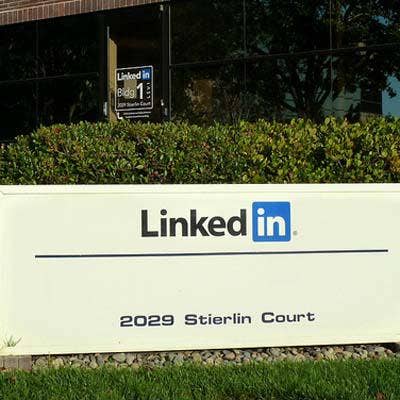10 Things You Need To Know About Microsoft's $26B LinkedIn Acquisition

What Microsoft Is Buying
Microsoft CEO Satya Nadella's biggest move yet to transform the software giant for the cloud era comes in the form of one of the biggest technology deals ever -- Microsoft is acquiring social media and professional networking site LinkedIn. You've seen the eye-popping price -- $26.2 billion -- of the acquisition, which makes it Microsoft's largest acquisition of all time. But in the following slides, CRN lays out some of the other details to know about what exactly Microsoft is getting with its planned acquisition of the gigantic professional network, including billions more in revenue and hundreds of millions of members that Microsoft will be able to target its Office products to.

Members
LinkedIn reports it has about 433 million members -- i.e., individual users who've created a profile. Of those, about 128 million are in the U.S. The size of LinkedIn's user base is crucial for Microsoft because targeting LinkedIn members for buying Microsoft products, such as Office 365, could be one of the key business goals of this deal.

Member Growth
LinkedIn's overall membership is growing steadily -- up 19 percent on a year-over-year basis, as of the end of March. That marked LinkedIn's best quarter for member growth in two years, the company said. In the U.S., however, the growth rate has been faster -- up 30 percent year over year.

Growing Revenue
Accelerating top-line growth is the primary objective of the acquisition, Microsoft said. And assuming it closes, the acquisition of LinkedIn should help offset Microsoft's slowing PC software business. The Wall Street consensus is that, on the whole, Microsoft's revenue will be down 2.2 percent during the current fiscal year, which concludes at the end of this month. The consensus is for $91.6 billion, compared with $93.6 billion for the fiscal year before.
How much will LinkedIn help? For 2016 on the whole, LinkedIn has issued guidance for between $3.65 billion and $3.7 billion in revenue -- up by as much as 28 percent from $2.99 billion in 2016. In 2015, LinkedIn sales were up 35 percent.
The two companies are on different fiscal calendars with the acquisition is expected to close by the end of calendar year 2016.

Where Are The Profits?
LinkedIn saw a GAAP net loss of about $46 million during the first quarter of the year, compared with a $42 million loss in the year-ago quarter. For 2015, LinkedIn's GAAP net loss was $166 million, compared with $15.7 million in 2014.

Premium Subscriptions
Many LinkedIn users are likely familiar with the site's "premium" subscription option -- which offer extra features, such as better search filters and more chances to mail other members. But premium subscriptions are actually the third-biggest business line of revenue for LinkedIn, contributing about $149 million to LinkedIn's top line in the first quarter of the year.

Talent Solutions
The largest contributor to LinkedIn's revenue, by far, is the company's Talent Solutions business -- essentially, tools for recruiters. Those included LinkedIn Recruiter, a professional database of job candidates that recruiters can filter in a number of ways. The Talent Solutions business contributed about $558 million to LinkedIn's top line during the first quarter of this year. For fiscal year 2015, Talent Solutions accounted for $1.87 billion in sales, up 42 percent from $1.32 billion in 2014.

Advertising
The second-largest business line for LinkedIn is advertising on the LinkedIn website and mobile app. That line contributed $154 million in revenue for LinkedIn in the first quarter.

Share Fluctuations
Microsoft has offered $196 per share for LinkedIn, roughly 50 percent above the closing price for LinkedIn stock on Friday. While it's certainly a huge premium, it's actually far less than what LinkedIn was worth just a few months back. As recently as February, LinkedIn shares were trading above $200, and in November, shares had traded at $255 a piece.

Behind The Share Drop
The plummeting of LinkedIn shares that began in February coincided with the firm's fourth-quarter financial report, which provided weaker-than-expected guidance for the first quarter of the year and saw LinkedIn's stock receive a string of downgrades from analysts.

Where LinkedIn Will Fit In
Microsoft said LinkedIn will be integrated into Microsoft's Productivity and Business Processes segment -- which includes Office (both Office Commercial and Office Consumer) and Microsoft Dynamics (including Dynamics ERP and CRM). Revenue for the segment came in at $6.5 billion during the first quarter of the year - -making it Microsoft's second-largest business line, behind More Personal Computing at about $9.5 billion in the first quarter.